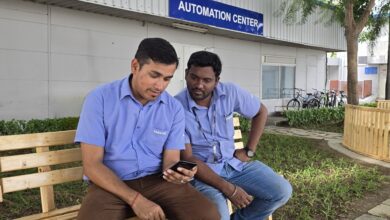Rustam Gilfanov: What science knows about stem cells and what it predicts in the future


New York City, New York Nov 15, 2021 (Issuewire.com) – Exactly 40 years ago, the future Nobel Prize winner Martin Evans published his study on mouse embryos’ stem cells and their medical potential. His research revolutionized biomedicine, as it envisioned the future, in which any damaged tissue could be replaced by a new one, grown in vitro from the patient’s cells.
What has changed since 1981? Are we approaching the times when regeneration and artificial organs become a reality? Or did the research tendencies change, with regeneration going out of style? Here, I will try to outline several major trends.
Why are stem cells still not a thing?
Many constraints hinder regenerative medicine breakthroughs. One of them is unpredictability: the researchers must be sure that stem cells will transform into the tissue they are planning to get.
It must also be taken into consideration that current technologies are demonstrating a lot of side effects. Patients with multiple sclerosis, who received stem cell treatment, suffered from low platelet and white blood cell counts infections, and toxic liver damage.
Another problem is the expensiveness of this method. One session of the MS treatment listed above cost 40, 000 pounds.
Finally, there is another constraint that still cannot be overcome and is related to technological and ethical issues.
What are the achievements of stem cell treatment?
We have to admit that now, 40 years since Martin Evans’ discovery and 23 years since the first successful in vitro stem cell manipulations, reproductive medicine is still taking its baby steps. There are many research programs but only a few technologies made it to “mass production”. Yet even these intermediate results seem astonishing.
For example, in 2016 a team of scientists from Greece and the UK attempted to regenerate muscle tissue of infarction patients by transplanting myocardium cells that had been grown in the lab [5]. As a result, cardiac callosity was reduced by 40%.
In 2020, researchers from Karolinska Institutet and St. Eric Eye Hospital (Sweden) found a way to improve the production of retina cells from embryonic stem cells for treating blindness among aged patients.
In 2019, Japanese medics, for the first time in history, transplanted hepatocytes grown from human embryonic stem cells to a six-day-old baby: the child’s liver did not have the enzyme that transforms nitrogen-containing breakdown products into urea. Thus, a rare congenital disease was blocked.
In 2020, 13 patients with spinal cord injuries received an experimental therapy that involved stem cells.
Summing up, almost every week a new article boasting successful stem cell research can be found in scientific journals. Yet all these experiments do not bring us closer to a victory over any severe disease or at least prove that regenerative medicine is reaching a new level. What is the matter, then?
What challenges is regenerative medicine facing?
1. The stem cell market reached 14.7 billion dollars in 2020 and is estimated to grow up to 26.4 billion by 2026. In other words, it is expected to double in the next five years.
Do you get what I mean? The belief in stem cells and their ability to solve almost any medical problem has turned this market into a bubble that can burst any moment, putting these exorbitant investments to waste. What is worse, this crisis will suspend ongoing medical research, possibly stymieing The One that could give us a really effective and scalable technology for treating cancer or cardiovascular diseases.
Market players, investors, and stem cell researchers themselves should lower their expectations so that the bubble stops growing on high hopes alone.
2. The stem cell industry (both investors and researchers) need to focus on the COVID-19 pandemic. Some studies are already attempting to fight COVID-19 with iPSC technologies; yet even if they fail (we do not have effective medications against various viruses and it is unlikely we get the ones treating SARS-CoV-2), it is necessary to seize the moment.
3. It is essential to take advantage of information technologies. Experiments on mice are unable to quickly assess various mechanisms of stem cell functioning, especially given the rigid ethical restrictions on human testing.
Present-day computer models offer unique opportunities for in silico research — technically, we already have reliable “virtual patients” for testing even such complex methods as cell “reprogramming”. “Virtual clinical trials” remove ethical constraints and enable the quick collection of data available to scientists from all over the world, who are conducting similar studies. There is no need to get rid of classical research methods, yet widespread in silico technologies can accelerate stem cell research multiple times.
4. Specialists from various industries — healthcare, law, IT, pharmaceutics, and fundamental science including humanities (e.g., researchers on morality, ethics, and philosophical notions of the digital age) — need to join their efforts and set the adequate rules of this game. What stem cells can be used and in what situations? Which “reprogramming” types are acceptable and which are not? What are the moral limits of clinical trials and therapy involving stem cells? Lots of questions still need answering — and provisioning these answers in codes and guidelines.
To truly make stem cells and regenerative medicine the next big thing, instead of becoming just another fashionable trend or a market bubble, we need to work this out. And we need to do it together.
About the Author
Rustam Gilfanov is an IT entrepreneur and a venture partner of the LongeVC fund.
Source :LongeVC
This article was originally published by IssueWire. Read the original article here.




